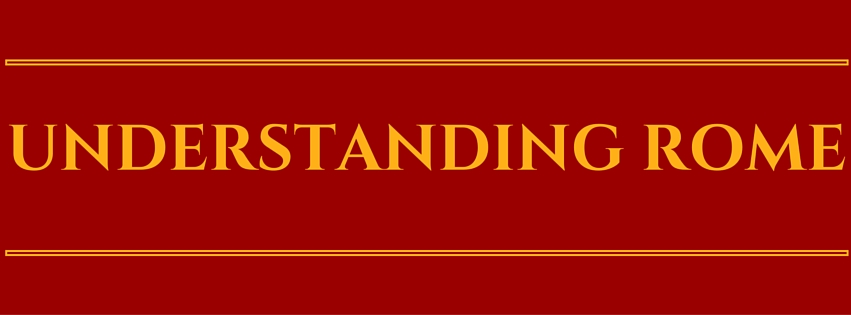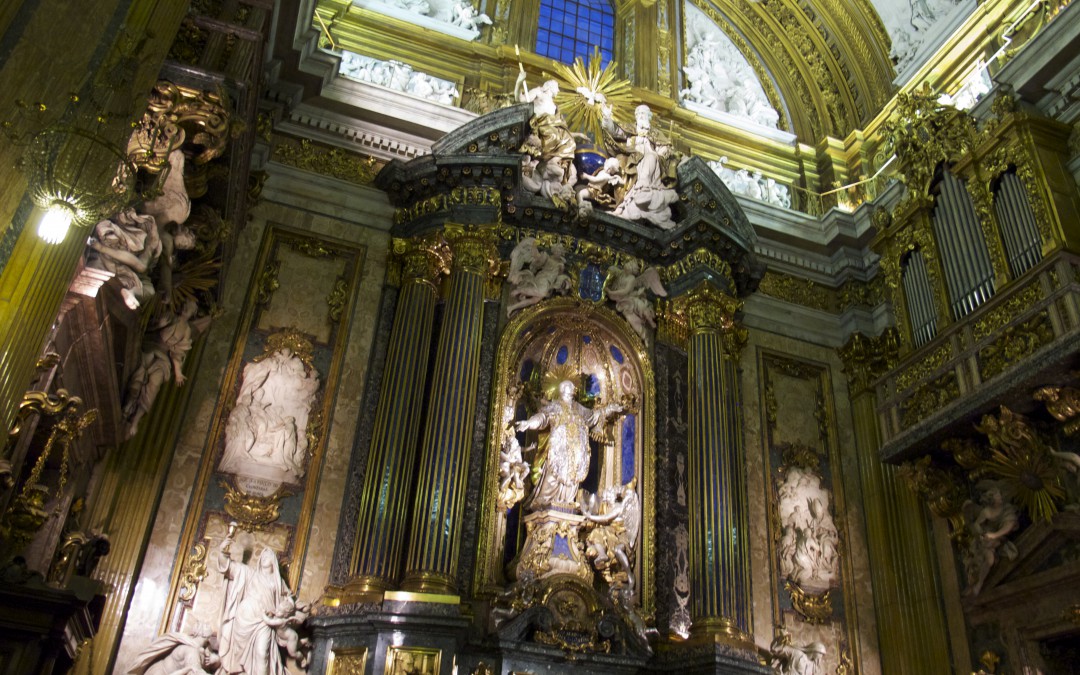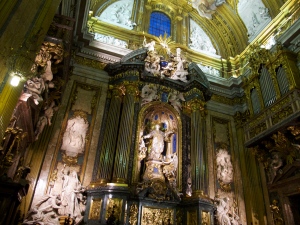A couple of weeks ago, in my post on the ceiling of the church of the Gesù, I mentioned that I would be taking a school group to the church. And so I did. They arrived from London on the Friday afternoon and ditched their bags at their hotel just off the Campo de’ Fiori. Hungry noises were made, so I suggested a pit stop for slices of pizza at Roscioli, and on to the Gesù we went.
I’d been told by their teachers that the girls were well-versed on Luther and the Reformation, but hadn’t yet arrived at the Roman response. So my job was to introduce them to the Counter Reformation. Outside the Gesù, amid the Friday afternoon traffic, we spoke of the Council of Trent, the formation of the Jesuit order, and how the seventeenth century decorations (including Baccicia’s glorious ceiling) marked Rome’s return to strength a century and a half after Luther’s protestations.
We spoke of the art of the Baroque as the “heavy guns” of the Roman Church’s “PR machine”, drawing the faithful ever closer to Rome. Of how the dramatic art was the material representation of the “Spiritual Exercises” advocated by the founder of the Jesuits, Ignatius, later St Ignatius, Loyola. These mantras were designed to conjure up visions and sensations of spiritual ecstasy in the faithful.
Inside, a world away from the chaos outside, I mentioned that the church, which Ignatius had himself seen constructed, was also the place of his tomb, and that sometimes the altarpiece was removed to reveal a statue of the saint himself in ecstasy in his gilded lapis lazuli niche. As if on cue, lights came on, illuminating Baccicia’s ceiling brilliantly, and, without fanfare, the vast altarpiece over St Ignatius’ tomb began to slide slowly downwards to reveal the glittering statue of the saint.
The theatre wasn’t lost on the girls; a clever mechanism and judicious lighting had expressed the essence and bombastic power of the Baroque in a single moment far better than any quantity of words ever could. It was a serendipitous start to a super weekend.



Wow. I didn’t know that! I have to go back and demand a show.
gosh you’re quick! It was the most amazingly lucky timing, and I’d never seen it in action before. It was c.5.30pm on a Friday, I shall investigate and let you know if there’s a “timetable”.
You sure made an impression!
We see it once a year: during the thanksgiving Mass (announced as a Te Deum) at 6:00pm on December 31 the altarpiece is always down. What the other occasions are – I do not know…
Since the restoration a few years ago it seems to be most Fridays. And important anniversaries (eg of his canonisation). The element of surprise is what makes it exciting though!